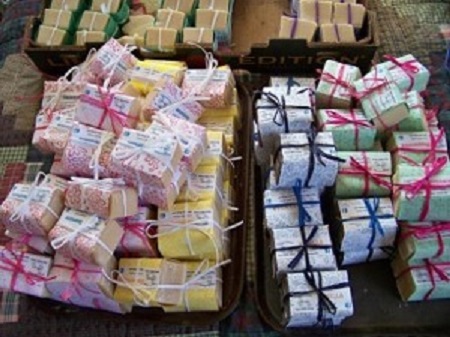Basics Of Goats Milk Soap Making
Safety gear is always used, including gloves, safety goggles and long sleeves.
A variety of oils are combined in a large stainless steel pan. It is slowly heated until it reaches 100°. We use Olive Oil, Sustainable Palm Oil, Coconut Oil, Palm Kernal Oil and Shea Butter. We use lard in some recipes.

In a separate stainless steel pan, a combination of frozen and liquid milk is carefully mixed with sodium hydroxide (lye). The lye causes the milk to heat. When the milk solution cools down to 100°, we add the oil and stir until “trace”. Trace is a specific level of thickness that occurs. We are careful to wear gloves and other protective items during the entire soapmaking process. We use no water in our recipe. Because the liquid is all goat milk, it is super moisturizing.
In a separate stainless steel pan, a combination of frozen and liquid milk is carefully mixed with sodium hydroxide (lye). The lye causes the milk to heat. When the milk solution cools down to 100°, we add the oil and stir until “trace”. Trace is a specific level of thickness that occurs. We are careful to wear gloves and other protective items during the entire soapmaking process. We use no water in our recipe. Because the liquid is all goat milk, it is super moisturizing.
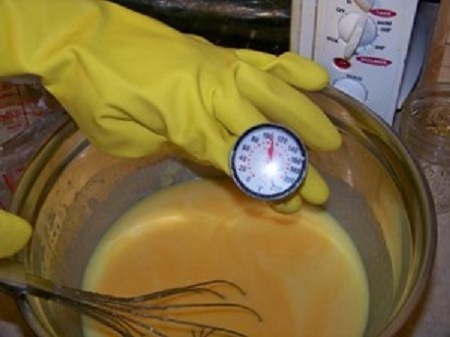
“Trace” is when the mixture reaches a specific level of thickness, beginning the process of saponification.
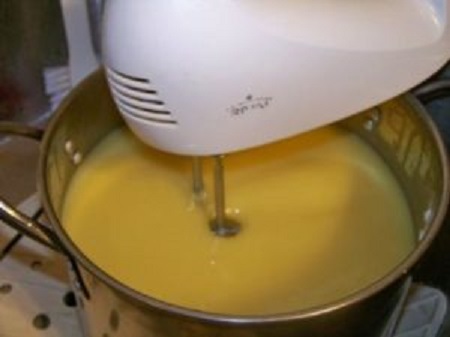
Next, essential or fragrance oils are added and the soap is poured into molds.
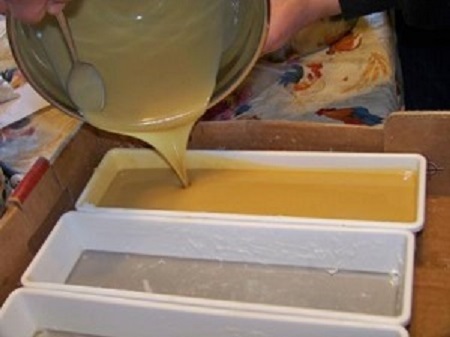
After 24 – 36 hours, the soaps are popped out of the molds and cut.
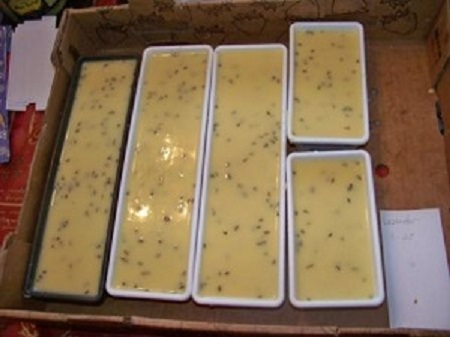
During the 4 week curing process, the lye changes into soap and glycerin. In commercial soaps, the glycerin is removed and sold for other products. In Cold Process soap, the glycerin remains, making it extremely moisturizing.
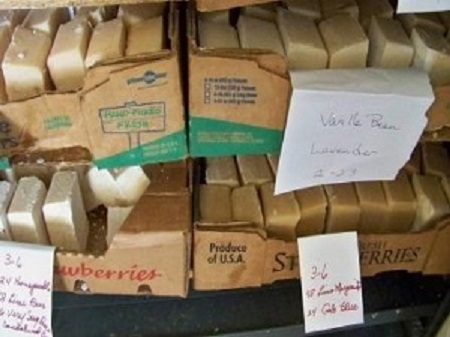
Here at Pine Lane Soaps, happiness is a huge stack of finished soap!!
